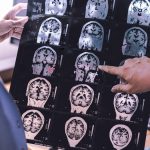
Acupuncture can help breast cancer patients deal with the hot flashes that often accompany hormone therapy, a new clinical trial says. Nearly 2 in 3 women who got acupuncture during hormone therapy reported fewer and less intense hot flashes, results show. Hormone therapy blocks the effect of estrogen and other hormones that powers some breast cancers. Unfortunately, 4 in 5 patients (80%) experience hot flashes and other side effects associated with hormone deficiencies, researchers said. This causes some patients to drop hormone therapy, increasing their risk of cancer progression and death. “By managing side effects, our approach makes it easier for patients to continue their prescribed medication, which has the potential to reduce the risk of cancer recurrence and improve long-term outcomes for breast cancer survivors,” researcher Weidong Lu, lead oncology acupuncturist at the Dana-Farber Cancer Institute in Boston, said in a news release. For the study, researchers recruited 158 women with early to advanced breast cancers who were receiving hormone therapy. Half were randomly assigned to receive acupuncture twice a week for 10 weeks. About 64% of women who got acupuncture reported improvement in the number and severity of their hot flashes, compared to 18% of women not receiving acupuncture, results show. They also reported greater improvements in quality of life. After 10 weeks, the women not initially chosen also were given acupuncture, and… read on > read on >





























-300x200.jpg)







-300x169.jpg)
